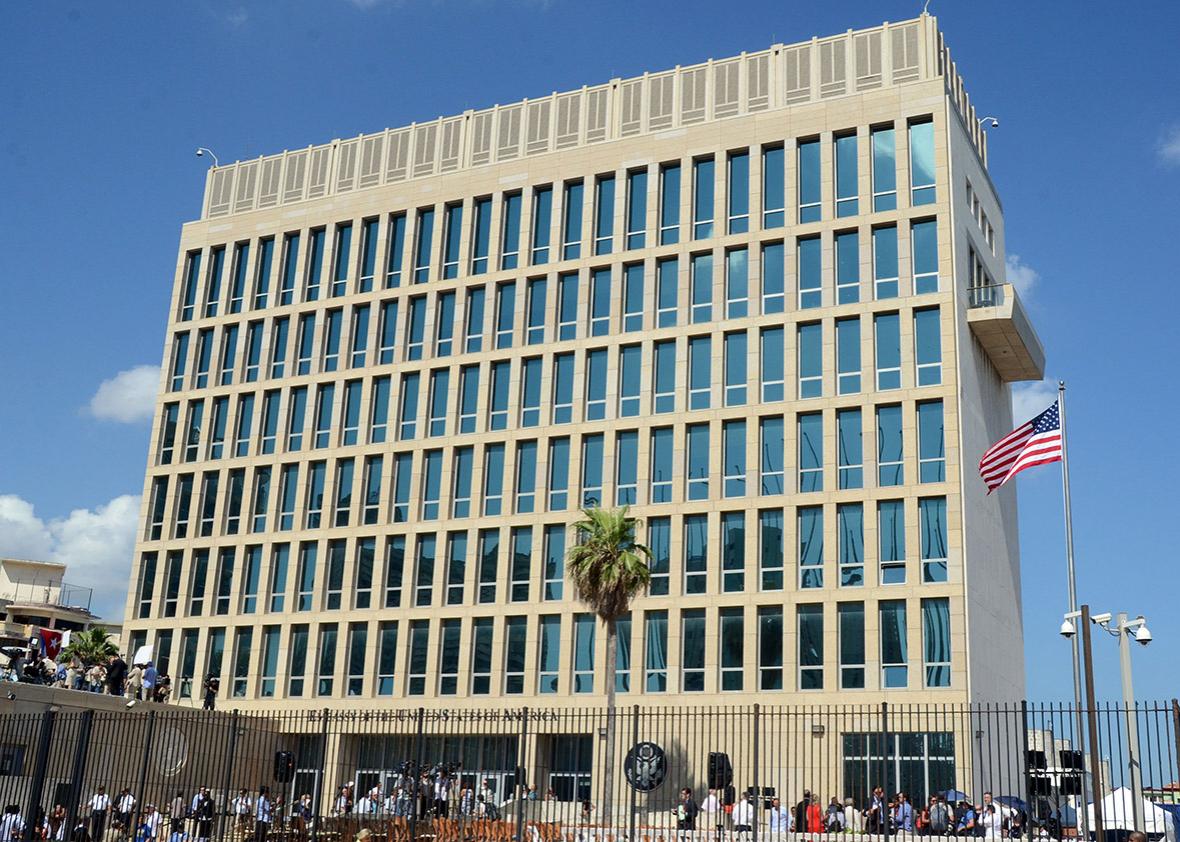Something weird is happening at the U.S. Embassy in Havana. Diplomats are reporting spells of dizziness, headaches, tinnitus, and fatigue. Fearful that someone in the Cuban government, or some other actor, might be bombarding the homes and hotels where American diplomats are staying with some sort of “sonic weapon,” the Trump administration is pulling about 60 percent of the embassy’s staff from the country.
The cause of these ailments is a mystery, but a clue as to what might be going on can be found in the espionage annals of the Cold War. In the 1970s, the Soviet government started bombarding the U.S. Embassy in Moscow with microwave beams—which, an Associated Press story at the time reported, were causing health problems among the employees. State Department officials were said to be baffled why the Russians would do this.
But a few very senior officials weren’t baffled at all. As I reported in the early pages of my 2016 book, Dark Territory: The Secret History of Cyber War, the United States and the Soviet Union were engaged in a game of spy vs. spy.
Around this time, the Russians switched their communications systems from radio signals to microwave transmissions. Radio signals bounced off the ionosphere all around the globe; the National Security Agency could pick them up with its large antennas and dishes from just about anyplace. Microwaves traveled much shorter distances; receivers had to be in the beam’s line of sight to intercept it. So, the NSA and the CIA sent spies across enemy lines, especially in the Warsaw Pact nations of Eastern Europe, to erect listening posts disguised as highway markers, telephone poles, and other mundane objects.
On the 10th floor of the U.S. Embassy in Moscow, the NSA had installed a vast array of electronic intelligence gear. In a city of few skyscrapers, the 10th floor offered a panoramic view, so microwave receivers were able to scoop up phone conversations between top Soviet officials, including Communist Party Chairman Leonid Brezhnev, as they rode around the city in their limousines.
The KGB suspected something peculiar was going on up there. In January 1978, Bobby Ray Inman, the NSA director, was awakened by a phone call from Warren Christopher, the deputy secretary of state. A fire had erupted in the Moscow embassy, and the local fire chief was saying he wouldn’t put it out unless he was given access to the 10th floor. Christopher asked Inman what he should do.
Inman replied, “Let it burn.” (The firefighters eventually put it out anyway; it was one of several fires that mysteriously erupted in the embassy during that era.)
As the Russians realized what the Americans were up to, they returned the gesture, shooting microwave beams at the 10th-floor window. It is still not clear precisely why. It might have been to demonstrate that they knew what our spies were doing; to saturate, refract, or otherwise neutralize our microwave receivers; or perhaps to listen in on the conversations going on inside the 10th-floor windows.
The last possibility may seem bizarre, but when I was a defense reporter for the Boston Globe in the 1980s, I sometimes heard Muzak when I interviewed senior Pentagon officials in their offices. I once asked one of them why it was playing. The official (I forget who it was) pointed to his large window, which overlooked the Potomac, and told me that the Russians might be listening with microwaves beamed from offices across the river. The Muzak, he explained, would disperse the beams.
I’m not claiming—because I don’t know—that the Cubans are shooting some sort of beams at our diplomats in Havana in response to our own intelligence operations. But I will say two things. First, it is not at all unlikely that Cuban communications still depend on technology obtained from Moscow circa 1975 and that U.S. spies are intercepting them with circa-1975 techniques.
Second, I asked a retired senior U.S. intelligence official whether the outbreak of health problems in Havana might be a reprise of the Moscow microwave incidents from 40 years ago. He replied that he had exactly the same thought when he read the news reports. “No ‘facts’ on my part,” he wrote me, referring to his lack of inside knowledge about current events in Cuba, “but I am assuming you are correct.”
